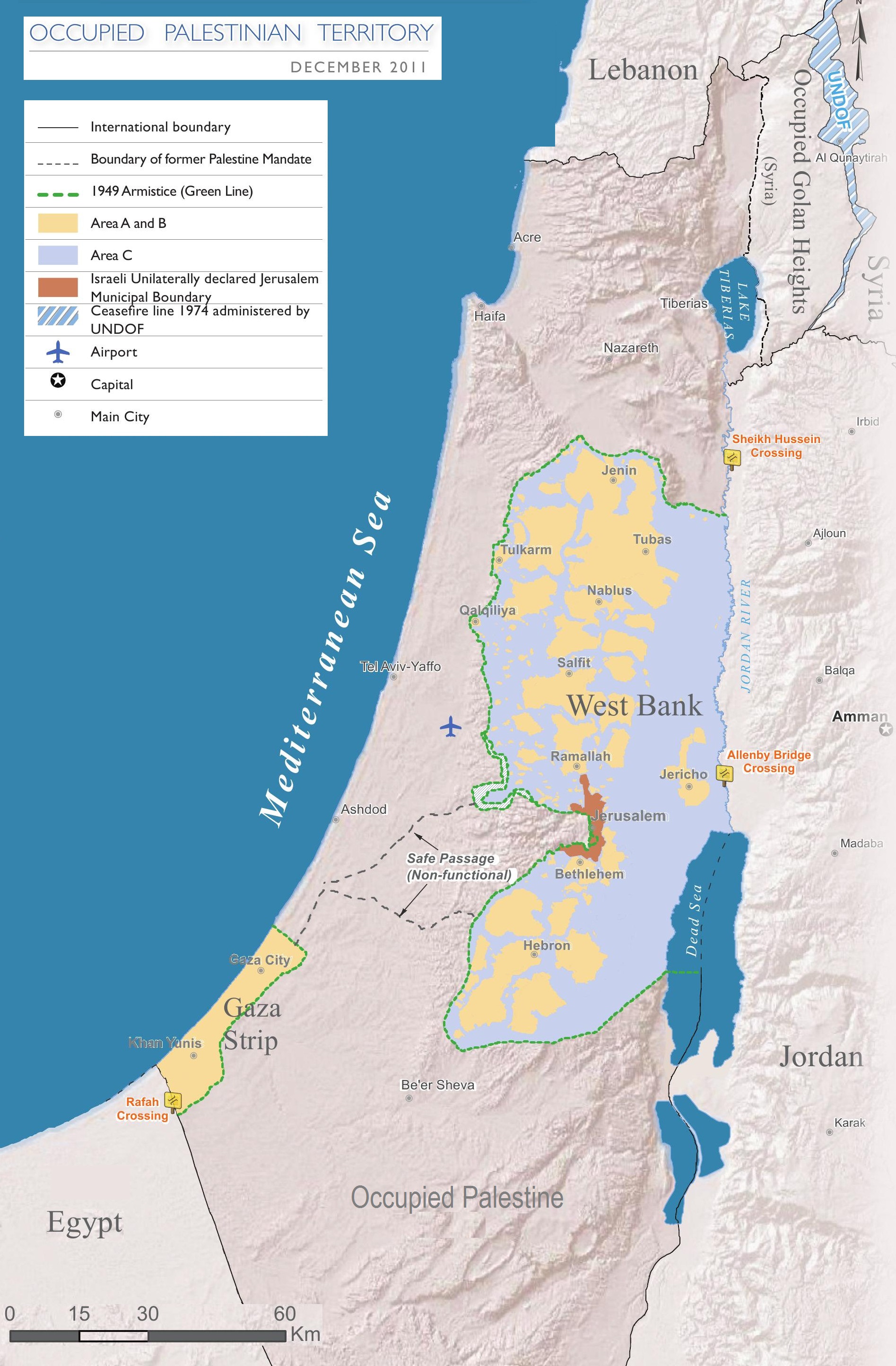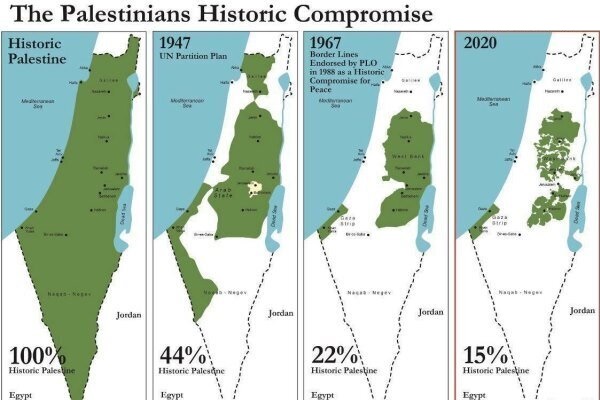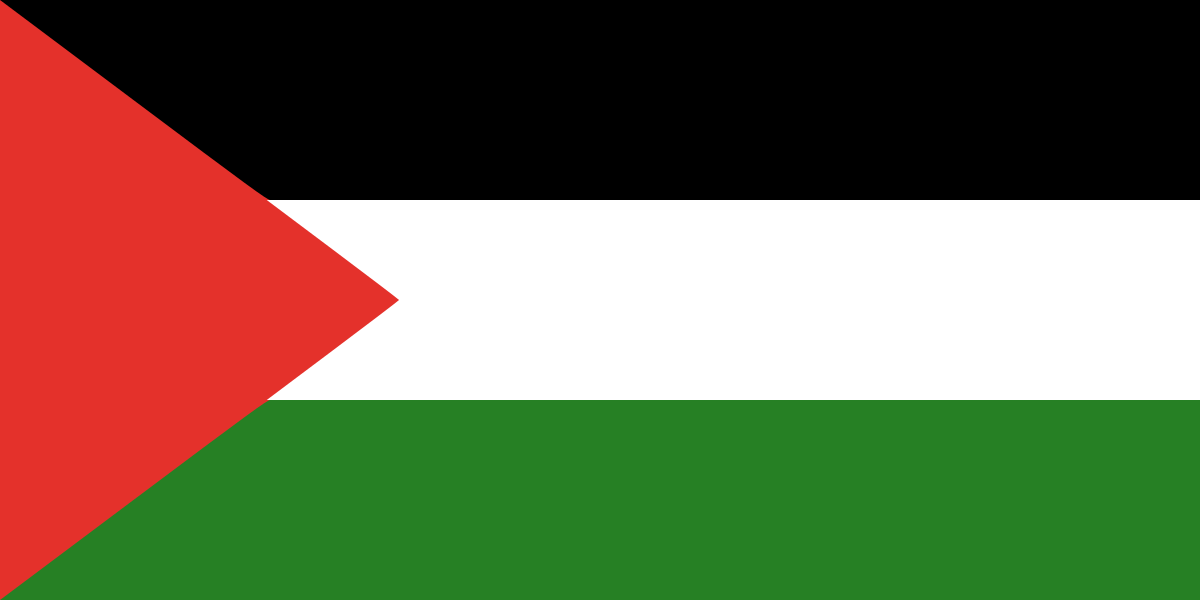Palestine (Arabic: فلسطین) is a Muslim country where al-Aqsa Mosque is located. Palestine is a neighbor of Lebanon, Jordan, Syria and Egypt. The capital of Palestine is Jerusalem al-Quds and the cities of Jericho and Gaza located there are considered among the oldest cities of the world.
Palestine (Arabic: فلسطین) is a Muslim country where al-Aqsa Mosque is located. Palestine is a neighbor of Lebanon, Jordan, Syria and Egypt. The capital of Palestine is Jerusalem al-Quds and the cities of Jericho and Gaza located there are considered among the oldest cities of the world.
Throughout history, Palestine has been the home of Muslims, Christians and Jews. Believing in monotheism began with the entrance of Abraham (a) to Palestine. Islam entered Palestine during the caliphate of Umar b. al-Khattab. After the entrance of Islam to Palestine, Umayyads, Abbasids, Fatimids and Ottomans ruled over this land. After the victory of Christians over Muslims in Crusades, Palestine came under the control of Christians for a while; but, later Muslims gained it back.
Palestine was occupied by Great Britain in 1917 and, as a result, the grounds for the occupation of Palestine by Jews were prepared. Palestine was occupied by them and they called it Israel and this occupation has continued to the present. During this period, this country has witnessed many wars, intifadas and massacres.
Like other countries, it has political parties, the most important ones of which are Hamas, Islamic Jihad Movement and Fatah. Sabirun Movement, and Shaqaqi assembly are among Shi'a Palestinian groups.
Shi'a have been among the inhabitants of Palestine and are still living there. However reliable statistics and online estimates indicate that they do not present a substantial size compared to other existing communities.
 |
Geography
Palestine is located in the east coast of the Mediterranean Sea. It neighbors Syria and Jordan in the east, Lebanon and partly Syria in the north and Egypt in the south. The area of Palestine is more than 27000 square kilometers.In the past, the south west of Syria was called Palestine; but, the borders of the present land of Palestine were demarcated after its occupation by Britain.
Palestine has a mild and Mediterranean climate which is appropriate for living. In the past, Palestine was considered a part of Syria; therefore, it was called "Southern Syria" among Arabs.
Most Famous Cities
The first city of Palestine was Ariha which was built in 8000 BC.After the immigration of Arabs to Palestine around the year 2500 BC, many cities and regions were developed including Beit She'an, Ashkelon, Acre, Haifa, Hebron, Bethlehem and Gaza.Cities of Ariha and Gaza are considered among the oldest cities of the world.Another city of Palestine is Nazareth. It was the hometown of Lady Mary (a); therefore, it has a great importance to Christians. The ancient city of Samaria is another city in Palestine. The well Joseph (a) was thrown in was in this city. The grave of Yahya (a) is also in this city. City of Hebron with a history of four thousand years is another important city of Palestine which was once among the important cities of Palestine.Ramallah is another important city of Palestine.
Jerusalem al-Quds, the present capital of Palestine, is the most important city of this country. It has been the birthplace of Christianity and Judaism. Also, the existence of al-Aqsa Mosque in this city as the first qibla of Muslims and the place where the Prophet Muhammad (s) ascended to the skies has made Jerusalem al-Quds very important to Muslims. Other important sites in Jerusalem al-Quds are: Qubbat al-Sakhrah, David's (a) Tomb, Position of Prophet Moses (a).

History
According to historians, Palestine was a living place for humans since Stone Age. Palestine has faced different stages of the development of human life from the ages of immigration to agriculture. The oldest known name of Palestine is Canaan; because, the first immigrants to Palestine were Canaanite Arabs who immigrated to Palestine 3500 BC. But, the name Palestine is adopted from immigrant tribes who immigrated from the west of Asia to this land about 1200 BC.
Believing in monotheism has existed in Palestine since the time Prophet Abraham (a) entered there. Prophet Abraham (a) chose Palestine for living and spread monotheism in this land. Finally, he (a) passed away in this land and was buried in Hebron. The cause of naming this city as Hebron was due to the existence of the grave of Abraham (a), Khalil Allah (Friend of God) in this city.
After Abraham (a), his son, Ishaq (a), and then his grandson Jacob (a) lived in Palestine; but the children of Jacob (a) immigrated to Egypt. After Moses (a) passed away, descendants of Jacob (a) known as Banu Israel returned to Palestine led by Joshua (a). Then, chaos took over Palestine and remained until the time of Talut. Then, Prophet David (a) succeeded Talut. David (a) dominated over all Palestine and chose Jerusalem as the capital of his government around 1000 BC. After David (a), his son, Solomon (a) became the king and then Palestine was greatly developed. During many centuries, most of the inhabitants of Palestine were Canaanite Arabs and were gradually mixed with other Arab tribes. Also in some periods, Jews took the power in some Palestinian regions; but then in 63 BC, Romans took over Palestine and dominated Jews.The prophethood of Jesus (a) began in 30 BC, and he (a) began his teachings in Jerusalem and guided people.
Expansion of Islam into Palestine
Islam entered Palestine during the rule of Abu Bakr; but, it was conquered in 13/634 at the time of the caliphate of Umar b. al-Khattab after some battles including the Battle of Ijnabayn led by Khalid b. al-Walid. According to some sources, in the Battle of Ijnabayn about three thousand people were killed.
From the Conquest of Muslims until its Occupation by Jews
During the caliphate of Umar b. al-Khattab, Palestine became a part of the Islamic lands and Umayyad and Abbasid caliphs ruled over it. In 358/969, Fatimids took the control of Palestine. In order to take the control of Palestine, Fatimids fought local movements, Qarmatians and Seljuk Turks. Meanwhile, struggle over Palestine continued and the control of Palestine was handed over between Mamluk Sultanate in Egypt, Mongols and Ottomans, until about 400/1009 Ottomans took complete control of Palestine. After crusades and killing of about seventy thousand Muslims, European Christians dominated Palestine in 493/1100. The rule of Christians after crusades lasted eighty eight years. After the Battle of Hattin led by Salah al-Din Ayyubi, Muslims took back Palestine. The rule of Ottomans over Palestine continued until 1917 when it was occupied by Britain. Occupation of Palestine by Britain continued until 1948, while Britain later called its occupation "mandate". In 1936, people of Palestine made a great revolution against the rule of Britain but it failed due to sabotages of Britain and Zionism.
Occupation of Palestine by Israel
In 1799, Napoleon Bonaparte was the first European leader who summoned Jews to establish a Jewish country in Palestine. Many years later in 1897, the first Zionist congress was held in Switzerland and a decision was made to follow a purposeful policy toward Judaization of Palestine. In order to desensitize the issue, they used the title "Jewish homeland" instead of "Jewish state". But, after thirty years and at the beginning of the World War I, one percent of Jews supported this plan and it failed in practice. At that time, only eight percent of the population of Palestine were Jews and regarding the area, only two percent of all Palestine was in their control. The happening of World War I led to issuance of Balfour Declaration in 1917. In this declaration, Britain demanded the establishment of a Jewish homeland in Palestine. Therefore, during the control of Britain over Palestine a great population of Zionists immigrated to Palestine, so that the number of Jews in this period increased six times.
In 1948, Israel was established.At that time, Jews occupied seventy eight percent of Palestine. Occupied regions included Hebron in North of Palestine, the coast of Mediterranean Sea, Naqab desert and the central part of Palestine. Since the West Bank was under control of Jordan and Gaza was controlled by Egyptian government, these two regions remained safe from the occupation of Zionists;but from 1967 until 1995 Israel occupied sixty percent of the West Bank and forty percent of Gaza. Also in this period, Israel occupied ninety seven percent of Palestine.
Palestine-Israel War
With the occupation of Palestine by Israel in 1948, there always existed struggles and fights between Palestine and Israel. These struggles are called Palestine-Israel struggle.Many states were sensitive toward this, but recently the struggle is attracted less attention of governments due to different political, economic and security reasons. However, the issue of Palestine has been notably supported by Shi'a; and the fatwas of many Shi'a scholars in this regard show support for Palestinians.
Al-Quds Day
One of the most important supports for Palestine by Shi'a was naming al-Quds Day by Imam Khomeini. Imam Khomeini, the former leader of the Islamic Republic of Iran, named the last Friday of the month of Ramadan, al-Quds day in support of the Palestinians. Every year in many countries of the world such as Iraq, Iran, India and Malaysia great demonstrations are held in support of Palestinians on al-Quds day.
Year of Nakba
Because of the establishment of Israel, 1948 was called the Year of Nakba (Day of the Catastrophe).Also, because of the defeat of Arab countries from Israel in 1967, that year was called the Year of Nakba. Their war lasted six days and after the defeat of Arab countries, the West Bank, Gaza and some other regions of neighboring countries were occupied by Israel.
Intifadas
During the years of the occupation of Palestine, it faced several uprisings of Palestinians. These uprisings were called "intifadas". The first uprising of Palestinians was made in 1976 called Intifada of the Earth Day. Another Intifada happened in 1987 which was called "the First Intifada" or "Intifada of Palestinian Nation". This intifada happened in the West Bank and Gaza. Another intifada was Intifada al-Aqsa. This Intifada began in 2000 because of entering Ariel Sharon, the prime minister of Israel, to al-Aqsa Mosque. One of the most important slogans of Intifada al-Aqsa was the establishment of a Palestinian government and disengagement of the West Bank by occupants.
In intifada 1987, which lasted six years, 1540 people were killed and 130 people were injured. In intifada 2000, 2800 people were killed.
Massacres
Israel has massacred of Palestinians several times. In 1948, thirty four massacres were made by Israel, the most famous of which was the massacre of Deir Yassin. In this massacre, 254 people were killed in a tragic manner. Another crime of Israel was the massacre of Khan Yunus in 1956, where 250 Palestinians were killed. One of the biggest crimes of the history was the massacre of Sabra and Shatila. This tragedy happened in 1982 where 3297 women and children were killed.
Residents of Palestine
According to historical sources, residents of Palestine are two groups of Arabs and Jews. Arabs include Muslims, Christians and other groups.
Arabs
According to statistics, the population of Arabs in Palestine was about 1,600,000 people in 1948, of which 88.5 percent were Muslims, 10.4 percent were Christians and 1.1 percent were other groups.After Arab–Israeli War in 1949, Arabs of Palestine were divided into four groups:
· Those who resisted against the occupation of 1948. This group were called the people of the Green Line.
· Inhabitants of the West bank of Jordan River and Gaza.
· Refugees in the Green Line, the West Bank, Gaza, Jordan, Syria and Lebanon who chose these regions for living.
· Palestinians who immigrated to other Arab and non-Arab countries.
In 1948, about half of Arabs of Palestine were exiled from the regions later called Israel and were forced to immigrate to the West Bank, Gaza, Jordan, Syria, Lebanon, Egypt and Iraq. According to statistics, in that year, remaining Arabs in Palestine comprised fourteen percent of the whole population of Palestine. According to statistics in 2002, the population of all Palestinians was eight million people, fifty two percent of whom were refugees to other countries.
Jews
In 1914, from all the people living in Palestine, about eight percent were Jews; but this proportion was increased to thirty percent in 1943. In 1948 and after the occupation of Palestine, Jews comprised most of the population of this land.
Political Parties
Like many other countries, Palestine has different political parties, some of the most famous ones of which are Muslim Brotherhood, Hamas, Islamic Jihad movement and the Palestinian National Liberation Movement (Fatah).
Muslim Brotherhood
Muslim Brotherhood of Palestine was established in 1948 with the cooperation of Muslim Brotherhood in Egypt and Jordan. After the occupation of the West Bank of the Jordan River and Gaza in 1967 by Israel, Muslim Brotherhood in Egypt and Jordan lost contact with Muslim Brotherhood in Palestine. This caused the development and progress of Muslim Brotherhood of Palestine.
Hamas
Resistance Movement of Palestine (Hamas) is the most prominent Islamic resistance movement of Palestine. This movement is the continuation of Muslim Brotherhood movement. Hamas movement set the priority of its activities on educating people, family and the society in order to prepare the grounds for the establishment of the Islamic state in Palestine. At the beginning of its establishment, Hamas did not have an idea for resisting the occupation of Palestine, but later engaged in armed fight.
Islamic Jihad Movement
Islamic Jihad movement is one of the most important parties in Palestine. This movement considered Palestine-Israel dispute as its central ideology. This movement began its activity in 1980. Islamic Jihad movement is different from other traditional Islamic movements including Muslim Brotherhood movement.
Palestinian National Liberation Movement (Fatah)
Palestinian National Liberation Movement is the oldest political party in Palestine. This movement was established in 1965. Most officials of the state of Palestine are members of this party.
Status of Palestine in the World of Islam
Palestine has a special status before Muslims due to different reasons including the existence of al-Aqsa Mosque there. The Prophet Muhammad (s) chose al-Aqsa Mosque as the first Qibla for Muslims. According to some exegetes, Jerusalem al-Quds is implicitly mentioned in the Qur'an. Also, many hadiths from the Prophet (s) and Imam Ali (a) are transmitted about the merits of the city. Palestine is generally mentioned in the Qur'an as "Ard Muqaddasa" (the Holy Land) and "Ard Mubaraka" (the Blessed Land). Palestine was the place of the prophethood of many prophets and the burial place of many divine prophets. Palestine was the place of ascent of the Prophet (s).
Palestine, the Land of Ascent
Al-Aqsa Mosque is the place of Prophet Muhammad's (s) ascent through the skies. During the rule of Abd al-Malik b. Marwan, a mosque was built upon the rock from where the Prophet (s) ascended to the skies and it was called Qubbat al-Sakhra (the Dome of the Rock).
Shi'a in Palestine
The presence of Shi'a in Palestine dates back to the early Islam and the presence of Abu Dhar al-Ghifari in Syria. Muqaddasi in Ahsan al-taqasim and Nasir Khusraw in Safar bi aramgah-i Abu Hurayra reported that once Shi'a comprised most of the population of Palestine.
Shi'a school of thought was spread in Palestine in the fourth/tenth century, during the rule of Fatimids. Al-Hakim bi Amr Allah, the sixth ruler of Fatimids established Dar al-Ilm Fatimi in Jerusalem. It had a great influence in spreading Shi'a in Palestine and continued its activity until the occupation of Palestine by Crusaders. Despite the crusades and after it, the dominance of the Sunni Salah al-Din Ayyubi over Palestine and Syria, Shi'a remained in Palestine. During the rule of Ottomans, Shi'a became influential once again.
The influence of Shi'a in Palestine in the twenty first century and the present time has increased due to the connection of Palestinian groups with Hezbollah of Lebanon. Victories of Hezbollah of Lebanon over Israel have had an important role in spreading Shi'a in Palestine. Statistics center of the section for religion and public life in Pew Research Center has approved the existence of Shi'a in Palestine.
Harassment of Shi'a
During the history, Shi'a of Palestine have been harassed a lot. The first suppression of Shi'a of Palestine was made by Salah al-Din Ayyubi. After the growth of Shi'a in Ottoman era, Ahmad Pasha fought them for ten years and burned their books. In 2010, security service of Hamas arrested tens of Shi'a converts. On the other hand, the group Ibn Bar al-Khayriyya al-Islamiyya in Gaza has focused on fighting the spread of Shi'a. Also, a movement is established in Gaza called jihad Salafi, the main goal of which is fighting Shi'a.
Shi'a Parties and Groups
Islamic Jihad movement is known as the flag bearer of Shi'a in Palestine. The founder of this movement was Fathi Shaqaqi. He was influenced by Shi'a; therefore, the Islamic Jihad movement is known as the symbol of Shi'a in Palestine.A group is formed in Palestine called Sabirun movement. This group was branched from the Islamic Jihad movement and is close to Shi'a. Sabirun movement began its activity in 2014 with the leadership of Hisham Salim. Supreme Shi'a Council of Palestine is among other Shi'a Palestinian groups. This group was established by Muhammad Abd al-Fattah Ghawanima in 2006. One of the most important Shi'a assemblies of Palestine is Shaqaqi assembly. This assembly is a nonpolitical charity which tries to have an equal view towards all Islamic schools.
Some other Shi'a institutions of Palestine are: Islamic Youths Association, Ihsan Khayri Clinic, Niqa' school, Ghadir community and Al al-Bayt (a) community. Also, al-Istiqlal weekly and the radio station, Idha'a Sawt al-Quds, is run by Shi'a of Palestine.



